The Solar Impulse solar-powered plane touched down today in Hawaii, at the end of a record-setting flight across the Pacific. Attention and praise are quite rightly going to be heaped on pilot André Borschberg, who will have been peeing into a funnel for 120 hours straight. But behind the scenes, Solar Impulse is also the work of a giant logistical operation that would put a space mission to shame.
Thanks to the very strict payload limits, Solar Impulse can only support one pilot (a role that’s been traded off between Borschberg and Bertrand Piccard between each leg of the journey). The pilot is mostly occupied with actually flying the plane, which leaves a whole host of other jobs that would normally be taken care of by the co-pilot.
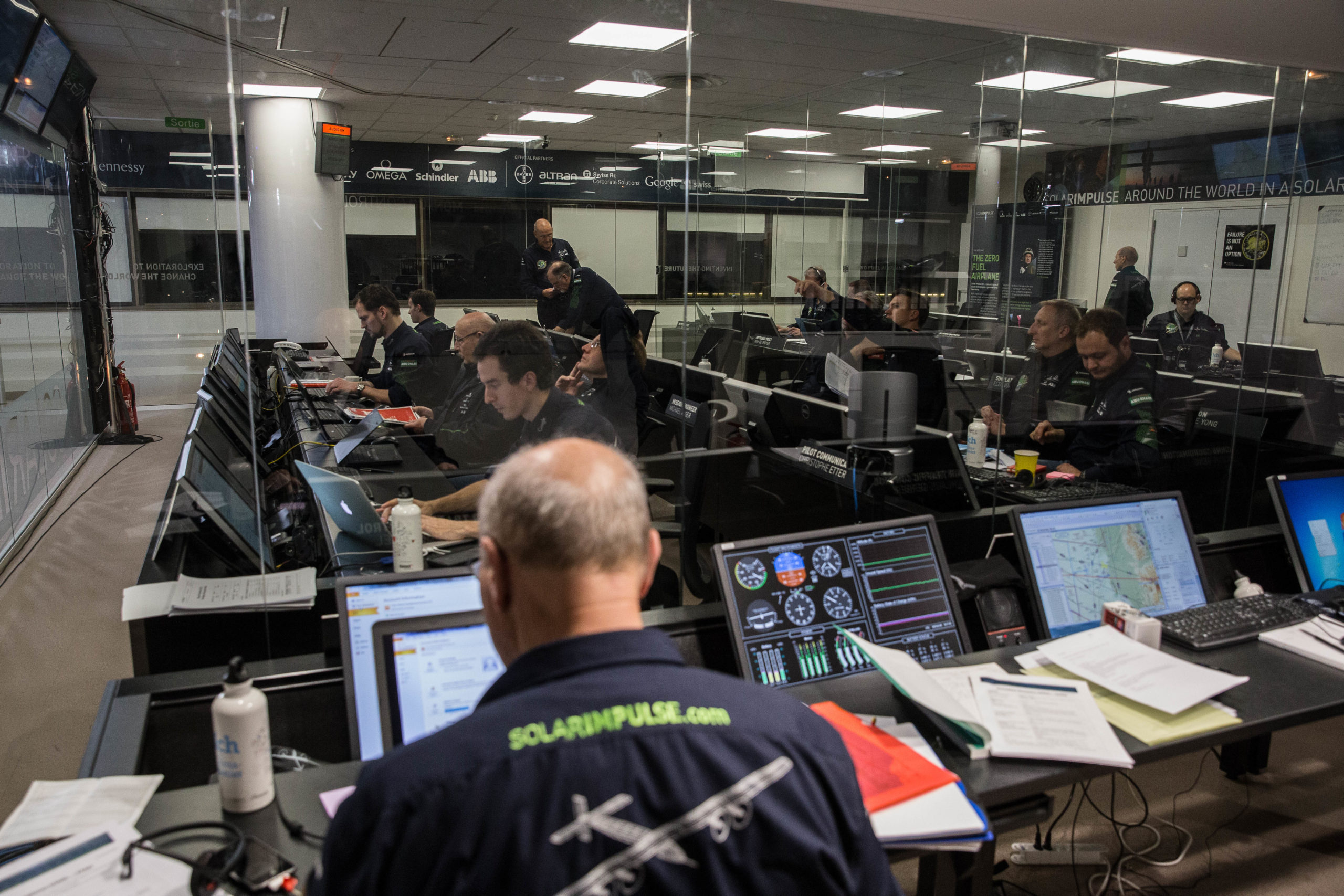
The Solar Impulse control center: 28 people monitoring the plane’s every move
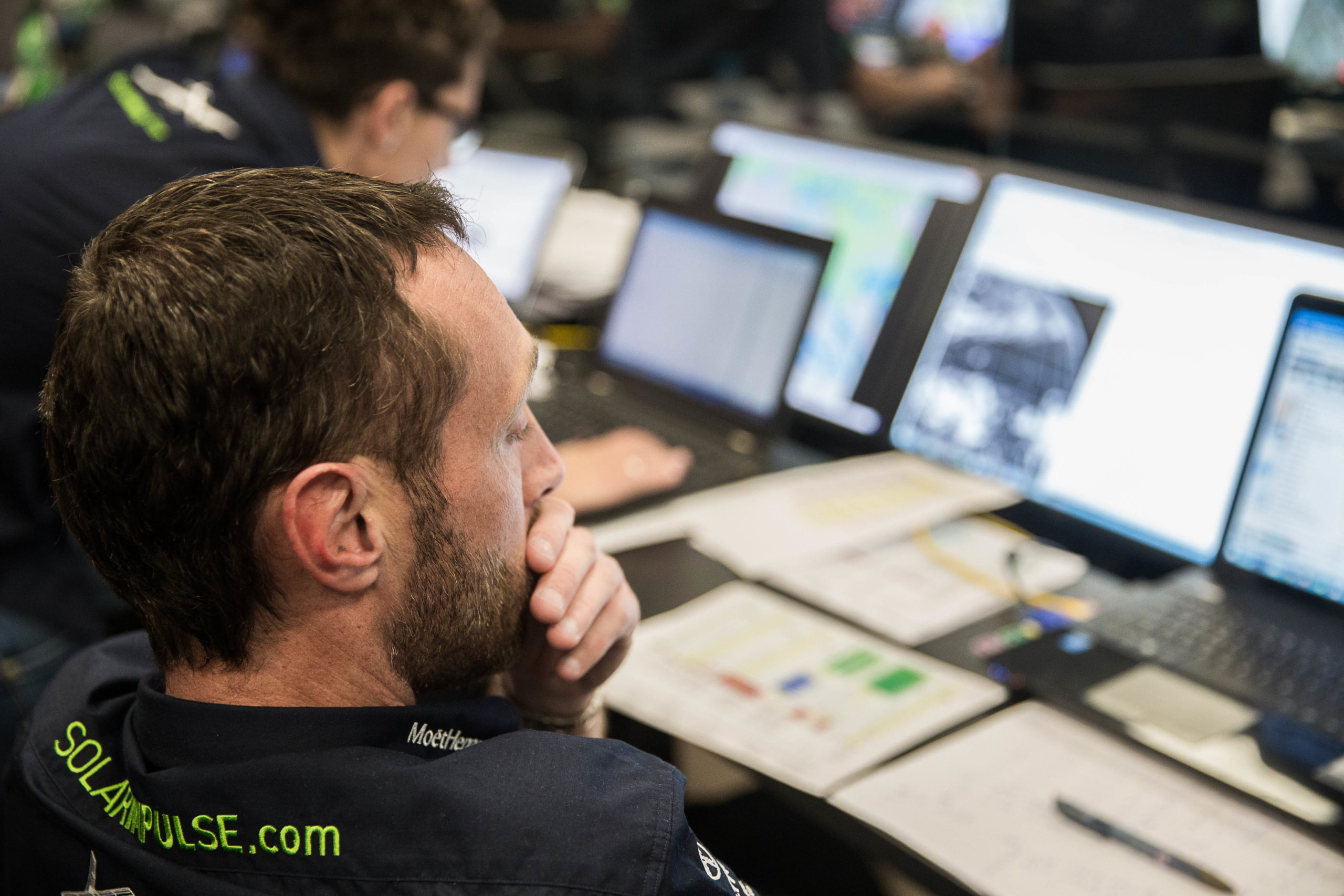
Meterologists having an ‘oh shit’ moment watching a weather front approach
Instead, that role is fulfilled by the Mission Control Center (MCC), a 60-person-strong outfit in Monaco, a tiny European principality hidden in the South of France. The MCC is responsible for looking after the plane and pilot in flight, so at any one moment during a flight, there’s a team of 28 on duty. Engineers monitor the aircraft’s systems to make sure everything’s healthy, while a medical team monitor the pilot to make sure he’s still awake and functioning.
Weather is also a huge concern for Solar Impulse. Cloud coverage is one of the biggest risks: if the plane can’t draw enough power from its solar cells to fly the plane and recharge the batteries to fly at night, it’s game over for the pilot, so a meteorological team has to keep an eye on the surrounding weather. Even then, the plane’s slow top speed means that a stiff headwind can completely ruin the mission, something that’s already caused problems for the team.
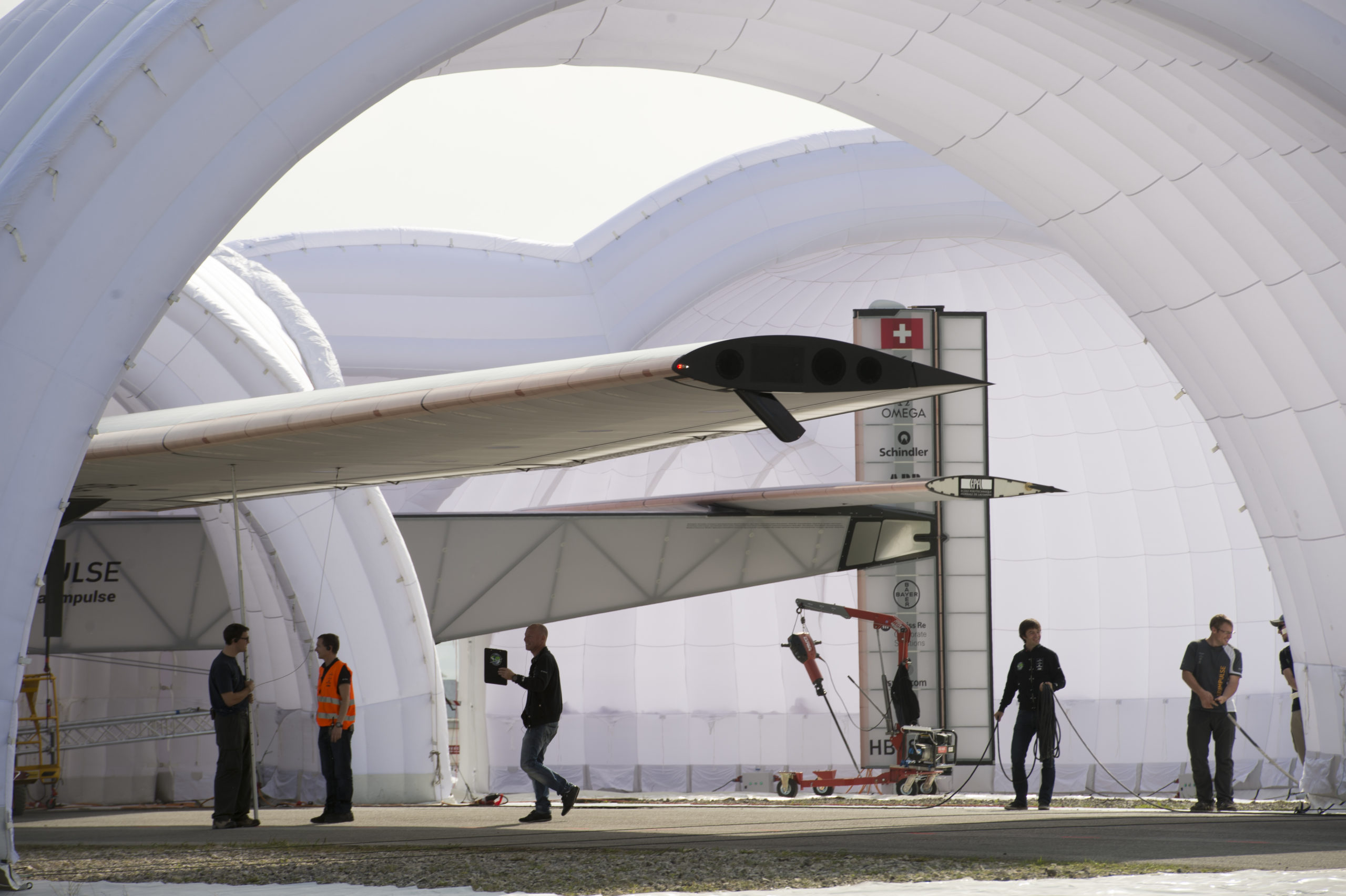
Finally, there’s a team liaising with Air Traffic Control, and the destination airports. Solar Impulse can’t quite land and take off like any other plane — for one thing, it needs people standing on the runway to catch it when it lands. That’s difficult to do in commercial airports, thanks to all those pesky jets taking off and landing every minute, so the airports often need to be shut down for 20 minutes, to accommodate the landing. To make that happen, Solar Impulse has to start working with airports and aviation authorities in every different country years in advance.
Once the plane is on the ground, it still needs some serious love. Thanks to the giant wingspan, the plane can’t be accommodated in a regular hangar, so the team travels with a giant inflatable hangar, which protects the aircraft from humidity, rain, wind, and temperature changes, all of which can mess with the delicate electronics.
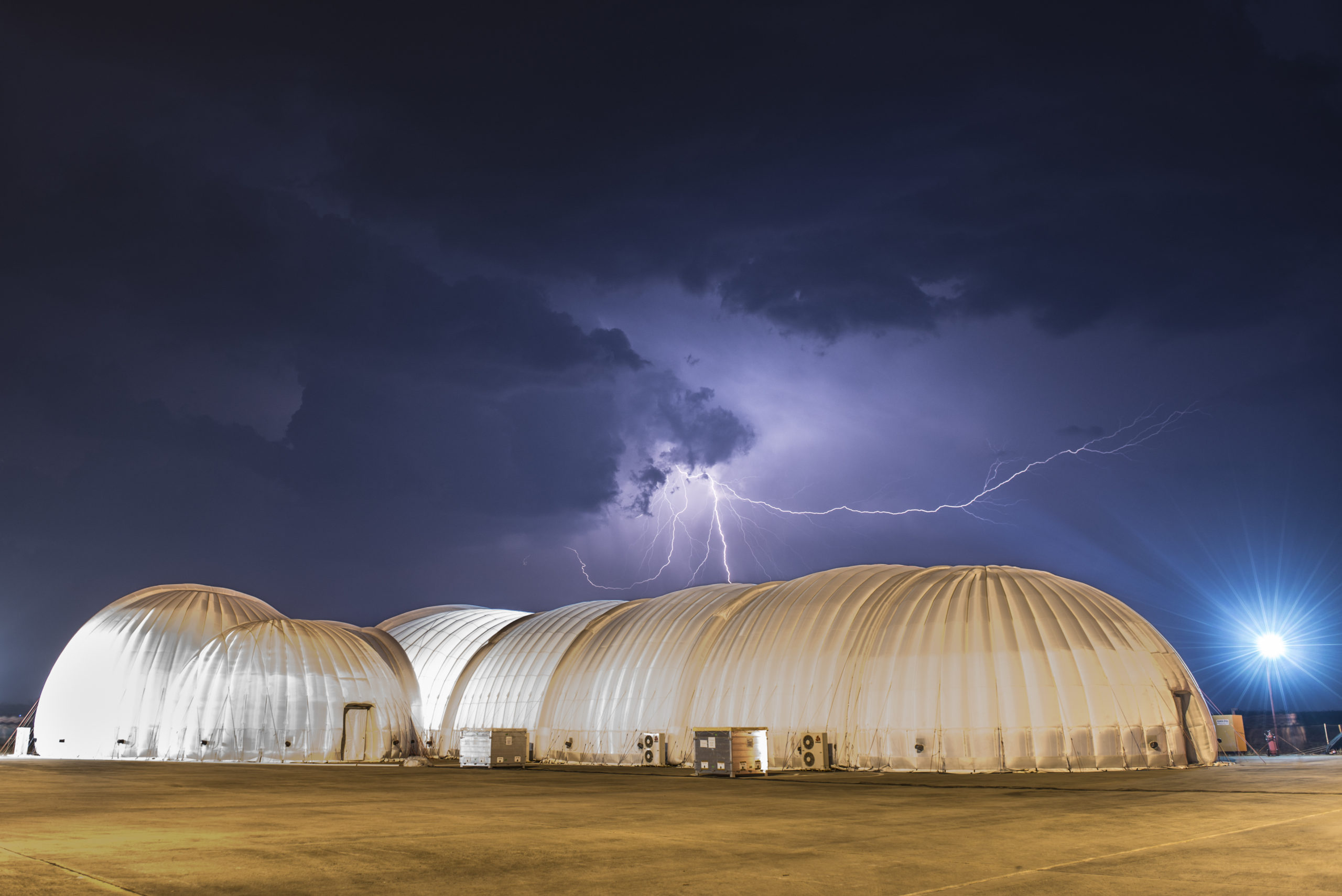
Add together the ground crew, inflatable hangar and spare parts, and that’s a lot of stuff to travel around the world. To carry the entourage from place to place, the team has one decidedly non-solar-powered plane: a Russian Ilyushin IL-76 strategic airlifter, a four-engine jet originally designed to carry machinery and military supplies into remote parts of the USSR.
The Ilyushin takes advantage of its vastly superior speed to leapfrog the Solar Impulse plane in flight, normally waiting until the solar-powered plane has passed the point of no return to take off and race to the next landing spot.
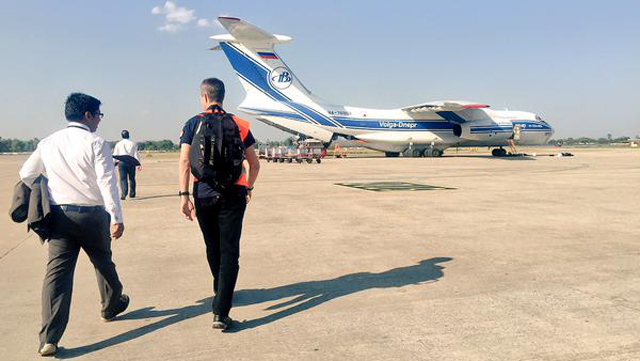
My other plane’s an IL-76
Given all the behind-the-scenes work — and the jet-fuel-eating Soviet airliner — it’s fair to question Solar Impulse’s #futureisclean mission. After all, even if Solar Impulse completes its around-the-world mission — something that’s looking increasingly likely after a successful Pacific crossing — it’s not exactly opening the floodgates for solar-powered commercial flights.
But in Solar Impulse’s eyes, that’s never been the point. According to Solar Impulse’s managing director, Gregory Blatt, it’s really just one big publicity stunt:
“Our aim has been to raise awareness, and the best way to do that is with a manned plane. If you look at our list of partners, only a few are from the aviation industry. Mostly, we’ve been working with specialist companies that have nothing to do with planes.”
It’s easy to dismiss Solar Impulse as a giant PR exercise for the solar panel industry. The mission is often misrepresented as a quest to demonstrate the feasibility of solar-powered flight — and from that perspective, it’s only succeeding if you can ignore the month-long layovers, massive support crew and dubious toilet facilities.
But if you see it instead as a flying testbed for technology that’s crucial to the future of renewable energy, it’s a very different conclusion. Blatt likes to say that for Solar Impulse, there’s “no cheating” — the pilot and the plane have to land, or the mission has failed. That black-and-white success or failure has probably done more to capture the public’s interest in solar power than any number of federal subsidies.
Pictures: Solar Impulse
